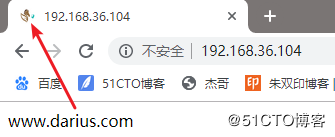正文
'"tcp_xff":"$proxy_protocol_addr",'
'"http_user_agent":"$http_user_agent",'
'"status":"$status"}'
;
access_log /apps/nginx/logs/access_json.log access_json;
重新加载nginx并访问测试日志格式
[root@CentOS7 ~]
[root@CentOS7 ~]
{"@timestamp":"2019-05-30T18:58:23+08:00","host":"192.168.36.104","clientip":"192.168.36.110","size":15,"responsetime":0.000,"upstreamtime":"-","upstreamhost":"-","http_host":"192.168.36.104","uri":"/index.html","domain":"192.168.36.104","xff":"-","referer":"-","tcp_xff":"","http_user_agent":"curl/7.29.0","status":"200"}
python实现json格式的日志访问统计
[root@CentOS7 logs]
status_200= []
status_404= []
with open("access_json.log") as f:
for line in f.readlines():
line = eval(line)
if line.get("status") == "200":
status_200.append(line.get)
elif line.get("status") == "404":
status_404.append(line.get)
else:
print("状态码 ERROR")
f.close()
print "状态码200的有--:",len(status_200)
print "状态码404的有--:",len(status_404)
[root@CentOS7 ~]
....
状态码200的有--: 403428
状态码404的有--: 125712
Nginx压缩功能
Nginx支持对指定类型的文件进行压缩然后再传输给客户端,而且压缩还可以设置压缩比例,压缩后的文件大小将比源文件显著变小,这样有助于降低出口带宽的利用率,降低企业的IT支出,不过会占用相应的CPU资源。Nginx对文件的压缩功能是依赖于模块ngx_http_gzip_module
gzip on | off;
gzip_comp_level level;
gzip_disable "MSIE [1-6]\.";
gzip_min_length 1k;
gzip_http_version 1.0 | 1.1;
gzip_buffers number size;
gzip_types mime-type ...;
gzip_vary on | off;
配置文件修改
gzip on;
gzip_comp_level 5;
gzip_min_length 1;
gzip_types text/plain application/javascript application/x-javascript text/cssapplication/xml text/javascript application/x-httpd-php image/jpeg image/gif image/png;
gzip_vary on;
[root@CentOS7 ~]
nginx: the configuration file /apps/nginx/conf/nginx.conf syntax is ok
nginx: configuration file /apps/nginx/conf/nginx.conf test is successful
[root@CentOS7 ~]
访问测试
[root@CentOS-Test ~]
HTTP/1.1 200 OK
Server: nginx
Date: Thu, 30 May 2019 11:26:49 GMT
Content-Type: text/html
Last-Modified: Thu, 30 May 2019 11:26:31 GMT
Connection: keep-alive
Vary: Accept-Encoding
ETag: W/"5cefbde7-720"
Content-Encoding: gzip
HTTPS 功能
Web网站的登录页面都是使用https加密传输的,加密数据以保障数据的安全,HTTPS能够加密信息,以免敏感信息被第三方获取,所以很多银行网站或电子邮箱等等安全级别较高的服务都会采用HTTPS协议,HTTPS其实是有两部分组成:HTTP + SSL / TLS,也就是在HTTP上又加了一层处理加密信息的模块。服务端和客户端的信息传输都会通过TLS进行加密,所以传输的数据都是加密后的数据。
https 实现过程
-
客户端发起HTTPS请求:
客户端访问某个web端的https地址,一般都是443端口
-
服务端的配置:
采用https协议的服务器必须要有一套证书,可以通过一些组织申请,也可以自己制作,目前国内很多网站都自己做的,当你访问一个网站的时候提示证书不可信任就表示证书是自己做的,证书就是一个公钥和私钥匙,就像一把锁和钥匙,正常情况下只有你的钥匙可以打开你的锁,你可以把这个送给别人让他锁住一个箱子,里面放满了钱或秘密,别人不知道里面放了什么而且别人也打不开,只有你的钥匙是可以打开的。
-
传送证书:
服务端给客户端传递证书,其实就是公钥,里面包含了很多信息,例如证书得到颁发机构、过期时间等等。
-
客户端解析证书:
这部分工作是有客户端完成的,首先回验证公钥的有效性,比如颁发机构、过期时间等等,如果发现异常则会弹出一个警告框提示证书可能存在问题,如果证书没有问题就生成一个随机值,然后用证书对该随机值进行加密,就像2步骤所说把随机值锁起来,不让别人看到。
-
传送4步骤的加密数据:
就是将用证书加密后的随机值传递给服务器,目的就是为了让服务器得到这个随机值,以后客户端和服务端的通信就可以通过这个随机值进行加密解密了。
-
服务端解密信息:
服务端用私钥解密5步骤加密后的随机值之后,得到了客户端传过来的随机值(私钥),然后把内容通过该值进行对称加密,对称加密就是将信息和私钥通过算法混合在一起,这样除非你知道私钥,不然是无法获取其内部的内容,而正好客户端和服务端都知道这个私钥,所以只要机密算法够复杂就可以保证数据的安全性。
-
传输加密后的信息:
服务端将用私钥加密后的数据传递给客户端,在客户端可以被还原出原数据内容。
-
客户端解密信息:
客户端用之前生成的私钥获解密服务端传递过来的数据,由于数据一直是加密的,因此即使第三方获取到数据也无法知道其详细内容。
ssl 配置参数
nginx 的https 功能基于模块ngx_http_ssl_module实现,因此如果是编译安装的nginx要使用参数ngx_http_ssl_module开启ssl功能,但是作为nginx的核心功能,yum安装的nginx默认就是开启的,编译安装的nginx需要指定编译参数--with-http_ssl_module开启
ssl on | off;
ssl_certificate /path/to/file;
ssl_certificate_key /path/to/file;
ssl_protocols [SSLv2] [SSLv3] [TLSv1] [TLSv1.1] [TLSv1.2];
ssl_session_cache off | none | [builtin[:size]] [shared:name:size];
off:关闭缓存
none: 通知客户端支持ssl session cache,但实际不支持
builtin[:size]:使用OpenSSL内建缓存,为每worker进程私有
[shared:name:size]:在各worker之间使用一个共享的缓存,需要定义一个缓存名称和缓存空间大小,一兆可以存储4000个会话信息,多个虚拟主机可以使用相同的缓存名称。
ssl_session_timeout time;
自签名证书创建
[root@CentOS7 ~]
[root@CentOS7 nginx]
[root@CentOS7 nginx]
[root@CentOS7 certs]
Generating a 4096 bit RSA private key
.............................................................................................................................................................................................................................................................................................................................................++
........................................................................................++
writing new private key to 'ca.key'
-----
You are about to be asked to enter information that will be incorporated
into your certificate request.
What you are about to enter is what is called a Distinguished Name or a DN.
There are quite a few fields but you can leave some blank
For some fields there will be a default value,
If you enter '.', the field will be left blank.
-----
Country Name (2 letter code) [XX]:CN
State or Province Name (full name) []:BeiJing
Locality Name (eg, city) [Default City]:BeiJing
Organization Name (eg, company) [Default Company Ltd]:magedu.com
Organizational Unit Name (eg, section) []:magedu
Common Name (eg, your name or your server's hostname) []:M36 # 通用名称
Email Address []: # 邮箱
[root@CentOS7 certs]#ll ca.crt
-rw-r--r-- 1 root root 2009 5月 30 19:34 ca.crt
# 创建自定义额key和csr文件
[root@CentOS7 certs]#openssl req -newkey rsa:4096 -nodes -sha256 -keyout www.darius.com.key -out www.darius.com.csr
Generating a 4096 bit RSA private key
............++
..........................++
writing new private key to 'www.darius.com.key'
-----
You are about to be asked to enter information that will be incorporated
into your certificate request.
What you are about to enter is what is called a Distinguished Name or a DN.
There are quite a few fields but you can leave some blank
For some fields there will be a default value,
If you enter '.', the field will be left blank.
-----
Country Name (2 letter code) [XX]:CN
State or Province Name (full name) []:BeiJing
Locality Name (eg, city) [Default City]:BeiJing
Organization Name (eg, company) [Default Company Ltd]:magedu.com
Organizational Unit Name (eg, section) []:magedu
Common Name (eg, your name or your server's hostname) []:M36
Email Address []:
Please enter the following 'extra' attributes
to be sent with your certificate request
A challenge password []:
An optional company name []:
[root@CentOS7 certs]
总用量 16
-rw-r--r-- 1 root root 2009 5月 30 19:34 ca.crt
-rw-r--r-- 1 root root 3272 5月 30 19:34 ca.key
-rw-r--r-- 1 root root 1695 5月 30 19:38 www.darius.com.csr
-rw-r--r-- 1 root root 3272 5月 30 19:38 www.darius.com.key
[root@CentOS7 certs]
Signature ok
subject=/C=CN/ST=BeiJing/L=BeiJing/O=magedu.com/OU=magedu/CN=M36
Getting CA Private Key
验证证书内容
[root@CentOS7 certs]
Certificate:
Data:
Version: 1 (0x0)
Serial Number:
fe:15:2c:1a:9d:a5:df:f5
Signature Algorithm: sha256WithRSAEncryption
Issuer: C=CN, ST=BeiJing, L=BeiJing, O=magedu.com, OU=magedu, CN=M36
Validity
Not Before: May 30 11:42:02 2019 GMT
Not After : May 27 11:42:02 2029 GMT
Subject: C=CN, ST=BeiJing, L=BeiJing, O=magedu.com, OU=magedu, CN=M36
Subject Public Key Info:
Public Key Algorithm: rsaEncryption
Public-Key: (4096 bit)
修改Nginx配置文件
[root@CentOS7 ~]
[root@CentOS7 ~]
server {
listen 80;
listen 443 ssl;
ssl_certificate /apps/nginx/certs/www.darius.com.crt;
ssl_certificate_key /apps/nginx/certs/www.darius.com.key;
ssl_session_cache shared:sslcache:20m;
ssl_session_timeout 10m;
server_name www.darius.com;
error_log logs/www_darius_com_error.log;
access_log logs/www_darius_com_access.log;
location / {
index index.html;
root /data/nginx/html/pc;
}
}
[root@CentOS7 ~]
nginx: the configuration file /apps/nginx/conf/nginx.conf syntax is ok
nginx: configuration file /apps/nginx/conf/nginx.conf test is successful
[root@CentOS7 ~]
访问测试

关于favicon.ico
favicon.ico 文件是浏览器收藏网址时显示的图标,当客户端使用浏览器问页面时,浏览器会自己主动发起请求获取页面的favicon.ico文件,但是当浏览器请求的favicon.ico文件不存在时,服务器会记录404日志,而且浏览器也会显示404报错。
具体配置
location = /favicon.ico {
root /data/nginx/images123;
}
显示效果

修改Nginx Server版本信息
[root@CentOS7 nginx-1.14.2]
49 static u_char ngx_http_server_string[] = "Server: Darius/10.0" CRLF;
[root@CentOS7 nginx-1.14.2]
[root@CentOS7 nginx-1.14.2]
[root@CentOS7 nginx-1.14.2]
启动服务
[root@CentOS7 nginx-1.14.2]




